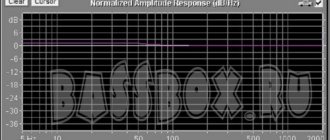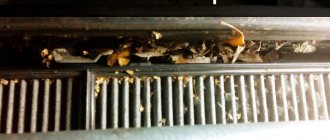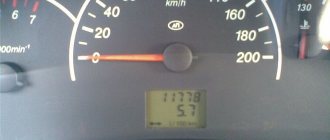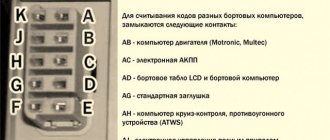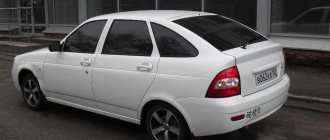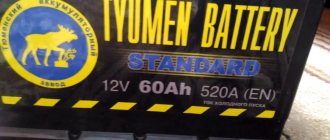Often, lovers of good car audio are faced with the question: how to design a box for a subwoofer so that it works with the highest possible efficiency? You can use recommendations from subwoofer manufacturers. However, they may not be enough to achieve the best results.
The fact is that manufacturers do not take into account the installation location of the box, as well as the style of the music being played. In this case, the sound can be of quite acceptable quality. But still, you can “swing” the subwoofer as much as possible only taking into account the characteristics of the machine and the style of the music being played. Hence the need for an individual calculation of the subwoofer box for each specific case.
There are many special programs designed to help solve this problem. The most popular is JBL SpeakerShop. Despite the fact that JBL released this software a long time ago, it continues to be in great demand among those who make their own subwoofers. At the same time, they always produce perfectly playing subs. To master all the functionality of the program, a beginner may need some time. Despite its small size, it contains many graphs, fields and other settings that need to be carefully understood.
How the device works
Any bass reflex type speaker has a hole - a bass reflex.
This is often called an acoustic tunnel or port. Its operating principle is to change the phase of the sound vibration caused by the rear side of the diffuser by one hundred and eighty degrees. When resonance occurs in the box, the vibration amplitude of the diffuser reaches a minimum value. The volume of air and the resonance frequency to which the channel is tuned depend on the size and type of the bass reflex port. The volume of air in the channel begins to resonate and enhance frequency reproduction when the moment comes when the diffuser emits the frequency for which the bass reflex is designed.
The classic tunnel is circular in shape. But to increase the useful internal area, it is often given a slotted appearance. Refusal of the cylindrical shape of the tunnel makes it possible to reduce its length and reduce the noise that occurs when air is released.
If there are errors in the calculation of a slotted bass reflex, it is much more difficult to configure it than the classic type, since it is manufactured together with the speaker. The calculation itself is more complicated than for closed-type systems: in addition to the volume of the box, the adjustable resonance frequency is taken into account. The optimal dimensions are selected taking into account the amplitude-frequency characteristics of the speaker, namely its uniformity.
QW Box Calculator
You've probably at least heard something about quarter-wave resonators. This type of enclosure is not so widely used in the construction of subwoofers and low-frequency sections of acoustic systems compared to, say, a bass reflex and a closed box. But why? After all, a quarter-wave oven provides undoubted fat advantages:
- gain in efficiency,
- excellent bass performance,
- low level of group delays.
In a word, “both loudly and efficiently.”
Perhaps because there are disadvantages:
- relatively large box volume,
- CV does not tolerate overloads,
- quite picky when choosing a speaker.
However, the last point also applies to the bass reflex.
Perhaps the widespread use of CV is also limited by the somewhat laborious nature of its calculations. Although the calculation itself is not that complicated, usually while you are designing a box, you have to go through several options, recalculating everything again each time. This is both tedious and time-consuming. And when you do something for a long time, you start making mistakes, and they are completely unacceptable when calculating the frequency factor.
There are two approaches to designing CV boxes:
- “maximalist”: we study theoretical issues for a long time using foreign sources (ours simply do not exist), we use the Hornresp program by David J. McBean, and then, using graph paper and a calculator, we painfully develop the details of the box;
- “minimalist”: we set the tuning frequency, and using the Quarter Wave Box Calculator program (let’s call it briefly: QW Box Calculator) we easily and quickly design a frequency wave box, completely forgetting about the evenings spent with a calculator, pencil and ruler. Now you only need a few minutes to design the CV housing!
The QW Box Calculator program is completely Russian-language. This is what the QW Box Calculator 2.4 window looks like:
As a result of the calculation, you receive a complete list of all parts and their dimensions. The overall dimensions of the box and its approximate weight are also displayed for reference.
This version supports three types of corner designs:
without decoration (simple corners)
gusset (45 degree inserts are glued into the corners from the inside)
radius (the corners from the inside are rounded with a radius equal to the width of the channel).
You select the desired corner design method, and the length of the channel is calculated taking into account the properties of this design. If calculated manually, this would be an additional headache.
QWB ox Calculator version 2 supports the following six types of housings:
Besides:
- a correction for the acoustic resistance of the outlet is automatically taken into account, not everyone knows about this effect, and almost no one takes it into account when manually calculating, but in vain;
- there is a Help System;
- saving/loading projects;
- printing;
- the number of screws for assembly is calculated;
- the minimum possible channel width is calculated.
And the calculated box can be drawn in three-dimensional form using the Google SketchUp program. We simply transfer the data to this program, and the box is automatically drawn, something like this:
The QW Box Calculator program is very easy to use, does not require resources, and pays off its price many times over.
To purchase the QW Box Calculato, click the "Proceed to Checkout" button directly below this line.
Making a box for a subwoofer with your own hands: step-by-step instructions
12-inch speaker for subwoofer Before you start designing and assembling the box, you need to decide on the choice of speaker. We recommend choosing 10-12 inch imported speakers, as they are most often used in car subwoofers and are best suited. We described in detail how to choose a speaker for a subwoofer in a previous article. The design of the box is also important: the quality and volume of low-frequency sound depends on it.
What types of subwoofer boxes are there?
There are several types of subwoofer boxes. The sound quality you get at the output directly depends on the design of the box. Below are the most popular types of subwoofers:
- A closed box is the easiest to manufacture and design; its name speaks for itself. The woofer is housed in a sealed wooden housing, which improves its acoustic performance. Making a subwoofer in a car with such a housing is quite simple, but it has the lowest efficiency.
- A 4th order bandpass is a type of subwoofer whose body is divided into chambers. The volumes of these chambers are different; in one of them there is a speaker, and in the second there is a bass reflex (air duct). One of the features of this type of subwoofer is the design's ability to limit the frequencies that the cone reproduces.
- The 6th order bandpass differs from the 4th order by the presence of another bass reflex and another camera. There are two types of 6th order bandpasses - the first has one bass reflex, and the second has two (one of them is common to both cameras). This type of box is the most difficult to design, but produces maximum efficiency.
- A bass reflex is a subwoofer with a special tube in the housing. It vents air and provides additional sound from the rear of the speaker. In terms of complexity in manufacturing and sound quality, this type is a cross between a closed box and a bandpass.
Find out the cost of the case!
If you want to get the highest quality sound, you can opt for bandpasses. But this type of design has many details that must be carefully designed and calculated. All this can be done using a special program WinlSD, which will not only determine the optimal size and volume of the subwoofer, but also create a 3D model of it, and also calculate the dimensions of all parts.
Unfortunately, this program requires at least minimal knowledge in this area and the average car enthusiast is unlikely to be able to do everything right the first time. Moreover, in order for the program to work correctly, it needs some speaker parameters, which are also not known to everyone. If you do not plan to take part in car audio competitions, we advise you to discard the bandpasses.
A bass reflex will be the most optimal solution for a homemade subwoofer. This type of box is good because the tube (bass reflex) allows you to better reproduce the lowest frequencies. In fact, this is an additional sound source that contributes to the sound of the subwoofer and increases efficiency.
We obtain the dimensions of the body based on the known displacement
So, we come to the final stage of events. Now we need to calculate what geometric dimensions the bass reflex housing will have if its total displacement is known - 60.3 liters. We take measurements of the trunk, determining acceptable dimensions. For example, a structure 60 cm long and 40 cm high suits us. It remains to find out the width. Let’s decide that we will make the walls of the box from plywood 1.8 cm thick. Now we need to subtract the wall thickness from the length and height of the structure (1, 8x2) and get the following values: length – 56.4; height – 36.4 cm. Next we carry out the following calculations: 60.3x1000:36.4:56.4=29.4. This will be the width of the case, however, without taking into account the thickness of the walls. Let's add it and get 33 cm. This is an approximate calculation of a subwoofer housing with a bass reflex for a specific speaker. Please note that this article is only a general guide; it does not take into account many of the subtleties and nuances that arise during the work process.
Programs for calculating the subwoofer enclosure
JBL speaker shop
A program for calculating the design of speakers and subwoofers in particular. The program is old and does not work with the latest operating systems, but nothing better has been invented so far, so you have to use small tricks to get it working. The program builds frequency response graphs, takes into account the transfer function of the cabin, takes into account the Thiel-Small parameters - that is, everything that is needed to correctly calculate the box for the subwoofer.
BassBox 6 Pro
The program for calculating subwoofers works on the basis of JBL speakershop, in the 5th version they even had the same interface - in the 6th it was changed. But the program works well and some may find it more convenient to work with it.
Bassport
A narrowly focused program designed to calculate bass reflex ports; the housing cannot be calculated in it . All attention is directed to the design of ports, taking into account air flows, shapes, distances to walls and partitions.
UniBox (Unified Box Model)
A very simple program that runs on Microsoft Windows Excel 2000 . Can simulate sound pressure level, speaker impedance curve, frequency response, etc.
We obtain the dimensions of the body based on the known displacement
So, we come to the final stage of events. Now we need to calculate what geometric dimensions the bass reflex housing will have if its total displacement is known - 60.3 liters. We take measurements of the trunk, determining acceptable dimensions. For example, a structure 60 cm long and 40 cm high suits us. It remains to find out the width. Let’s decide that we will make the walls of the box from plywood 1.8 cm thick. Now we need to subtract the wall thickness from the length and height of the structure (1, 8x2) and get the following values: length – 56.4; height – 36.4 cm. Next we carry out the following calculations: 60.3x1000:36.4:56.4=29.4. This will be the width of the case, however, without taking into account the thickness of the walls. Let's add it and get 33 cm. This is an approximate calculation of a subwoofer housing with a bass reflex for a specific speaker. Please note that this article is only a general guide; it does not take into account many of the subtleties and nuances that arise during the work process.
Case size calculation
When the volume of the body is known, the shape of this body does not affect the sound. There are various programs for calculating a box for a subwoofer (a program for calculating a subwoofer box is “JBL SpeakerShop” or “Winisd beta.”), but you can simply do the calculation, knowing yourself that the volume is V=hx L x A (where h is the height , L - length, A - width).
For example, how to calculate a box for a subwoofer, if for a 12-inch subwoofer (305 mm), the recommended volume is 45 liters. The measured permissible height for the body in a car is 340 mm (h=340 mm), length 680 mm (L=680 mm), let's calculate the width. A=V/Lxh
Read also: Gas 24 tuning photo
The permissible height (h) for space in the car is h=340 mm=34 cm=0.34 m, and the permissible length L=680 mm=68 cm=0.68 m. 1 liter = 1•10−3 m³ 1 l = 0.001 m³ then V= 45 l = 0.045 m³.
Don't forget that there is an internal and external volume, so you need to take into account the thickness of the material from which the subwoofer box is made. If the box is made of MDF with a thickness of 2 mm (0.02 m), then we reduce the measured values of height and length by the thickness of the MDF on both sides and calculate the internal volume. h = 0.34m -0.02 x 2= 0.3m; L = 0.68m – 0.04m = 0.64m.
In addition, it is necessary to take into account when calculating the volume of internal struts used in the manufacture of the body. Suppose we use a beam with a thickness of 3 cm by 3 cm as spacers, then we get 4 bars with a length of 0.64 m (length L = 0.64 m) and 4 bars with a length of 0.24 m (the length obtained from the height “h” reduced by 3 cm on both sides 0.3 – 0.03 x 2 = 0.24). For now we will not take into account the internal struts on the sides. The volume that the spacers will have in this case is V=(0.03 x 0.03 x 0.64) x 4 +(0.03 x 0.03 x0.24) x4=0.003168 m³. Then we increase the volume of the box by the volume of the spacers. V= 0.048168 m³ A = V/L xh = 0.048168 m³ /0.3m x 0.64 = 0.2509m. If the volume is increased by the volume of the side struts, then A = 0.255 m. We want to make a subwoofer enclosure with a slightly inclined front wall, in this case the lengths of the side walls will change: if A = 0.255 m, then A = a + b / 2 = 0 .33 + 0.18 /2=0.255, that is, reduce the length “b” by the amount by which you increase the length “a”.
If you need to calculate the volume of a box for a subwoofer of complex shape! Then you can contact our Auto Studio to calculate and manufacture the body.
for example, the subwoofer housing is installed in a wing niche, and will have a complex geometric shape, repeating the geometry of the niche, while the rear part of the subwoofer housing has different shapes. In this case, you will have to calculate the subwoofer housing in parts, counting volumes “1” and “2” separately » parts.
See how to calculate a housing for a speaker
Option No. 2
First of all, guided by Fig. 1 and the table, it is necessary to make a “standard volume” - a sealed plywood box, all joints of which are carefully adjusted, glued and coated with plasticine to avoid air leaks.
rice. 1
| Speaker diffuser diameter, mm | Dimensions, mm | ||
| A | IN | WITH | |
| 200 | 255 | 220 | 170 |
| 250 | 360 | 220 | 220 |
| 300 | 360 | 220 | 270 |
| 375 | 510 | 220 | 335 |
Next, the natural resonance frequency of the loudspeaker located in free space is measured. To do this, it is suspended in the air away from large objects (furniture, walls, ceiling). The measurement diagram is shown in Fig. 2.
rice. 2
Here ZG is a calibrated sound generator, V is an alternating current tube voltmeter and R is a resistor with a resistance of 100–1000 ohms (at higher resistance values the measurement is more accurate).
By rotating the frequency adjustment knob of the sound generator in the range from 15-20 to 200-250 Hz, achieve the maximum deflection of the voltmeter needle. The frequency at which the deviation is maximum is the resonant frequency of the loudspeaker in free space Fв.
The next stage is to determine the resonant frequency of the loudspeaker Fв when it is operating at a “standard volume”. To do this, the loudspeaker is placed with a diffuser on the hole of a “standard volume” and pressed lightly to avoid air leaks at the junction of the surfaces. The method for determining the resonance frequency is the same, but in this case it will be 2–4 times higher.
rice. 3 fig. 4
Knowing these two frequencies, the dimensions of the bass reflex are found using nomograms. Depending on the diameter of the loudspeaker diffuser, select the nomogram shown in Fig. 3 (for diameter .200 mm), in Fig. 4 (for diameters 250 and 300 mm) or in Fig. 5 (for diameter 375 mm). Using the selected nomogram, the volume of the bass reflex is determined by connecting the points corresponding to the found frequencies on the “Resonant frequency” axes with a straight line.
Vas indicator
This parameter for speakers can be measured using two methods:
- additional mass;
- additional volume.
In the first case, measurements are made using some weights (10 grams for every inch of diffuser diameter). These could be, for example, weights from pharmacy scales or old coins whose denomination corresponds to their weight. The diffuser is loaded with such objects and its frequency is measured. Next, the necessary calculations are made using the formulas.
When using the additional volume method, the sound emitter is hermetically sealed in a special measuring box with the magnet facing outward. Next, the resonant frequency is measured and the electrical and mechanical quality factors of the speaker, as well as the total, are calculated. Then, taking into account the obtained data, Vas is determined using the formula.
You may be interested in: An astronomer is a scientist who studies astronomy
It is believed that the lower Vas, other things being equal, the more compact design can be used for the speaker. Typically, small values of this parameter at the same resonant frequency are the result of a combination of a heavy moving system and a rigid suspension.
How the device works
Any bass reflex type speaker has a hole - a bass reflex. This is often called an acoustic tunnel or port. Its operating principle is to change the phase of the sound vibration caused by the rear side of the diffuser by one hundred and eighty degrees. When resonance occurs in the box, the vibration amplitude of the diffuser reaches a minimum value.
The volume of air and the resonance frequency to which the channel is tuned depend on the size and type of the bass reflex port. The volume of air in the channel begins to resonate and enhance frequency reproduction when the moment comes when the diffuser emits the frequency for which the bass reflex is designed.
The classic tunnel is circular in shape. But to increase the useful internal area, it is often given a slotted appearance. Refusal of the cylindrical shape of the tunnel makes it possible to reduce its length and reduce the noise that occurs when air is released.
If there are errors in the calculation of a slotted bass reflex, it is much more difficult to configure it than the classic type, since it is manufactured together with the speaker. The calculation itself is more complicated than for closed-type systems: in addition to the volume of the box, the adjustable resonance frequency is taken into account. The optimal dimensions are selected taking into account the amplitude-frequency characteristics of the speaker, namely its uniformity.
How to work with JBL SpeakerShop?
The entire functionality of the program is divided into two large modules. Using the first one, you can calculate the volume of the subwoofer box. Using the second, the crossover is calculated. In order to start calculating, you should open the SpeakerShop Enclosure Module. It has the ability to simulate the frequency response for closed boxes, bass reflex enclosures, bandpasses, as well as passive radiators. In practice, the first two options are most often used. The multitude of input fields can be confusing. However, don't despair.
In order to calculate the displacement, it is enough to use only three parameters:
- resonant frequency (Fs);
- equivalent volume (Vas);
- total quality factor (Qts).
To increase the accuracy of the calculation, it is permissible to use other characteristics. These can be found in your speaker manuals or online. Still, as mentioned above, you can completely get by with these three characteristics, called Thiel-Smol parameters. You can enter these parameters in the form that appears after pressing Ctrl+Z. In addition, you can go to the form after selecting the Loudspeaker – Parametersminimum menu item. After entering the data, the program will ask you to confirm it. At the next stage, it is necessary to simulate the amplitude-frequency response, then the frequency response.
Making your own port
The bass reflex, just like the speaker, is involved in sound reproduction. To avoid the interference effect, the channel is placed closer to the low-frequency emitter at a distance not exceeding its wavelength. Rigid structures are used as FI, for example, plastic sewer pipes are used in homemade products.
But when trying to calculate a bass reflex for a subwoofer, consumers are faced with the fact that the diameter of such pipes does not coincide with the calculated values, so the pipe is made from a dense material at hand - whatman paper. In order to make a channel yourself, you will need:
- newsprint;
- whatman;
- glue.
A strip cut from whatman paper, the width of which coincides with the length of the tube, is wound in several turns on the surface of newsprint. In this case, epoxy glue is applied before each turn. It is obtained by mixing resin and hardener according to the instructions. After all the turns have been completed, the product is wrapped in a circle with thread to impart rigidity and placed to dry.
After a day, the base is removed. If difficulties arise, it can be broken from the inside and taken out in parts. A manufactured channel of this type has good strength and is easily subject to additional processing. Next, the resulting tube is installed in the hole of the speaker, but not all the way, and listening to the sound begins. In the factory, a special device is used. Such a device operates on the basis of a multivibrator, which is tuned to the resonant frequency of the dynamic head. After connecting the speaker, the generator starts and the length of the pipe is adjusted to the maximum fluctuation of air in it.
You can do the same setup yourself. To do this, a low frequency signal is supplied to the input. The tube is moved forward or immersed inside the box, and then the volume of escaping air is assessed. Having established the position of its maximum outlet, the excess pipe is removed from the outside, and the port itself is sealed. If desired, to give the structure a finished look, open the pipes, but you can do without it.
Bass reflex differences
Every speaker has a resonant frequency. When working above this indicator, you get good sound, and below this, the pressure level drops by 12 dB per octave (frequencies are reduced by 2 times). The lower level of reproducibility is considered to be 6 dB. By installing the speaker in a box, the resonant purity increases due to the additional elasticity of the air. Increasing the resonant frequency pulls up and the lower limit. The less air in the box, the better the elasticity and the higher the performance.
You can make a “big box” without increasing its size. For this purpose, a material with damping properties
(cotton wool). The more of it there is in the box, the lower the frequency of the speaker. But when there is too much filler, it has the opposite effect. For inexperienced people, the quality of the box and its size are not important. In most cases, the column size is optimal.
A bass reflex is a pipe, not necessarily round, of a certain length, which has resonance. Thanks to the “second resonance”, the sound output of the speaker increases. The vibration frequency of the speaker in the box should be lower than in the normal state. Thus, the decline is compensated and the sound expands. These indicators for a bass reflex will be 24 dB higher than for a buried box. It extends the low end frequencies of the speaker.
To avoid barrel sound
, resonance indicators should not be higher than that of a closed box. And if the frequency is too low, the speaker's performance drops. This is the essence of adjusting the bass reflex in order to get a positive effect and not spoil the sound. And at home you can achieve good sound with an error of 5%.
Closed box
This type of design is the simplest. A closed box for a subwoofer is easy to calculate and assemble. Its design is a box of several walls, most often 6.
Advantages of ZY:
- Simple calculation;
- Easy assembly;
- Small displacement of the finished box, and therefore compact;
- Good impulsive characteristics;
- Fast and clear bass. Plays club tracks well.
A closed box has only one drawback, but sometimes it is decisive. This type of design has a very low level of efficiency compared to other boxes. A closed box is not suitable for those who want high sound pressure.
However, it is suitable for fans of rock, club music, jazz and the like. If a person wants bass, but needs space in the trunk, then a closed box is an ideal option. A closed box will not play well if the wrong volume is selected. What volume of box is needed for this type of design was long ago decided by experienced people in car audio through calculations and experiments. The choice of volume will depend on the size of the subwoofer speaker.
The most common speaker sizes are: 6, 8, 10, 12, 15, 18 inches. But you can also find speakers of other sizes; as a rule, they are used very rarely in installations. Subwoofers with a diameter of 6 inches are produced by several companies and are also rarely found in installations. Mostly people choose speakers with a diameter of 8-18 inches. Some people indicate the diameter of the subwoofer speaker in centimeters, which is not entirely correct. In professional car audio, it is customary to express dimensions in inches.
Recommended volume for a closed box subwoofer:
- an 8-inch subwoofer (20 cm) requires 8-12 liters of net volume,
- for 10-inch (25 cm) 13-23 liters of net volume,
- for 12-inch (30 cm) 24-37 liters of net volume,
- for 15-inch (38 cm) 38-57 liters net volume
- and for 18 inches (46 cm) you will need 58-80 liters.
The volume is given approximately, since for each speaker you need to select a certain volume based on its characteristics. The setting of a closed box will depend on its volume. The larger the volume of the box, the lower the tuning frequency of the box will be, the bass will be softer. The smaller the volume of the box, the higher the frequency of the box, and the bass will be clearer and faster. You should not increase or decrease the volume too much, as this is fraught with consequences. When calculating the box, adhere to the volume that was indicated above. If there is too much volume, the bass will turn out vague and indistinct. If the volume is not enough, then the bass will be very fast and “pound” the ears in the worst sense of the word.
A lot depends on how the box is configured, but an equally important point is “Setting up the radio.”
What does the quality factor of a speaker affect?
Q in acoustic systems primarily affects the frequency response and impulse characteristics of the speakers. That is, this indicator largely determines the sound characteristics of the speakers. With a quality factor of 0.5, for example, the best impulse response can be achieved. With an indicator of 0.707, an even frequency response is obtained. Also when:
- Q factor 0.5-0.6 speakers produce audiophile bass;
- indices of 0.85-0.9, the bass becomes elastic and prominent;
- quality factor of 1.0, a “hump” with an amplitude of 1.5 dB appears in the cut, perceived by the human ear as a biting sound.
You may be interested in: Corporate state: definition, essence
With a further increase in the Q indicator, the “hump” in the sound grows and characteristic buzzing noises begin to emanate from the speakers.
Determine the total volume of the body
By calculating the bass reflex with the JBLSpeakerShop program, we determined the required net volume for our specific subwoofer and the frequency to which the port needs to be tuned. BassPort "told" us the length of the port, as well as the volume that it will occupy. Now we carry out the following arithmetic operations: we add up the volumes - port, pure and displaced by the speaker. The resulting value will be the total internal displacement of our future body. It should be noted that if roundings, stiffeners are used in the body, or it is slotted, then we will have to take into account all these nuances. Approximate calculation of a slotted bass reflex: 1. The net volume is 45 liters.2. Slot port – area 140 cm3, 36 Hz – 8.5 l. Let's add 3.8 liters to the port walls (made of 18 mm plywood).3. Displaced by speaker - 3 l.4. We add these values and get 60.3 liters - the total displacement of the hull.
Top 10 articles
- A simple and reliable do-it-yourself metal detector - 206,429 views.
- DIY microwave oven repair - 192,533 views.
- Charger from a computer power supply. — 186,982 views.
- Simple DIY metal detector - 185,864 views.
- Car chargers. Scheme. Principle of operation. — 161,904 views.
- A simple and reliable thermostat circuit for an incubator - 154,431 views.
- Simple automatic charger - 118,375 views.
- A variety of simple circuits on the NE555 - 117,725 views.
- DIY moonshine still - 110,649 views.
- How to change the USB connector yourself? — 103,658 views.
Option #3. Calculation of the bass reflex size according to the nomogram
rice.
9. Nomogram In the low frequency range, the operation of a loudspeaker does not depend on the shape of the box or the type of bass reflex, but is determined only by two acoustic design parameters - the volume of the bass reflex box V and its tuning frequency Fb. The calculation of acoustic design basically comes down to finding these quantities. In order to understand the methodology for calculating loudspeakers using a nomogram, let's consider several examples.
Example 1. Calculate the optimal acoustic design for a known low-frequency driver. Let's assume that using measurements the head parameters are determined: Qa=3.2, Qe=0.33, Vas=0.120m3, fs=40 Hz. When operating from an amplifier with zero output resistance (Rg=0), the Qt of the head will be 0.3. Let's mark the point Qt=0.3 on the abscissa axis, draw a straight line perpendicular to the axis through it and find the ordinates of the points of intersection of the straight line with the curves in the upper and lower parts of the nomogram: Vas/V=3, fb/fs=1.25, f3/fs= 1.47. Substituting the measured values of the head parameters Vas=0.120m3, fs=40 Hz into the resulting ratios, we find: V=0.04 m3, fb=50 Hz, f3=59 Hz. Thus, if you do not take measures to additionally regulate Qt, to obtain a smooth frequency response of the loudspeaker, it is enough to place a given head in a bass reflex box with a volume of 0.04 m3 and tune it to a frequency of 50 Hz. The cutoff frequency of the loudspeaker will be equal to 59 Hz.
Example 2. For the same original head with Qa = 3.2, Qe = 0.33, Vas = 0.120 m3, fs = 40 Hz, it is necessary to calculate the parameters of the bass reflex box so that the cutoff frequency of the loudspeaker is equal to 35 Hz. At a specified cutoff frequency, the calculation begins by determining f3/fs. In the case under consideration, f3/fs=0.875. Next, a straight line is drawn through the point with ordinate 0.875 on the f3/fs curve, perpendicular to the abscissa axis, and the coordinates of its intersection points with the Vas/V and fb/fs curves are determined, i.e. Qt=0.415, Vas/V=1.05, fb/ fs =0.93. Substituting the head parameter values Vas=0.12m3, fs=40 Hz into the resulting ratios, we find V=0.114 m3, fb=37 Hz. Therefore, in order to obtain a smooth frequency response of a loudspeaker with a cutoff frequency of f3 = 35 Hz, the volume of the bass reflex box should be 0.114 m3, and the tuning frequency should be 37 Hz. In addition, since the required value of the total Q of the head differs from the measured one (when operating from an amplifier with zero output impedance Qt = 0.3), additional adjustment of this parameter will be required to achieve the desired shape of the frequency response.
Example 3. A low-frequency head is given (Qa=3.2, Qe=0.33, Vas=0.12m3, fs=40 Hz) and the volume of acoustic design is set to 19 V=0.06 m3. It is required to design a loudspeaker with a smooth frequency response. Let's define the ratio Vas/V =2. Through the point with ordinate 2 on the Vas/V curve we draw a straight line perpendicular to the abscissa axis and find the coordinates of its intersection points with the fb/fs and f3/fs curves: Qt=0.345; fb/fs=1,1; f3/fs=1,2. Substituting the values of the head parameters into the last ratios, we find fb=44 Hz, f3=48 Hz. Thus, in order to obtain a smooth frequency response of the loudspeaker with a given head and in a box of the specified dimensions, you will need to adjust the bass reflex box to a frequency of fb = 44 Hz and, using control means, bring the total Q of the head to a value of 0.345.
FAQ on designing subwoofers for those who want to make their own subwoofer with understanding.
(click on the picture to enlarge) 4) When assembling, you need to put it on glue - IMHO, PVA is best, but the plates should be pressed tightly during gluing - this can be done with the help of clamps, but if they are not there, you can first make holes and plant them on self-tapping screws. (for those who have never done this, let me remind you that the self-tapping screw must fit freely into the hole for the screw in the attached surface, and the hole in the attaching surface must be of such a diameter that the self-tapping screw does not break chipboard/plywood/mdf (i.e. on 3mm thinner than a self-tapping screw (approximately)). It is better to tighten this thing with an electric screwdriver or, as I do, with a drill with an attachment for a self-tapping screw (and you can press it harder with a drill, but you should be careful because you can get a dislocation), because manually twisting - it won’t work out very well; if it’s possible to twist it in half in chipboard, then in plywood or MDF - it will be real torture. 5) Bass reflex - sewer pipes are usually used, they can be found on any market for building materials of various calibers, then if the pipe is long then it’s better to strengthen it in some way, perhaps fabric + epoxy as an option. As an option, you can also use pipes on which linoleum is wound in stores, thick pipes are excellent in general, and you won’t have to pay for them, come up and ask - they’ll give you at least 20 of them. 6) how to cut a hole for the speaker and FI - if there are many ways: The most correct one is with a milling cutter - it will work out neatly and accurately. You can use special files for jigsaws, which allow you to cut in a circle, You can also use a drill. Make holes along the contour next to each other (but not protrude beyond the circle required for the speaker) and then finish the job using a jigsaw, after which you can level it manually or using something else - it’s whatever you think of. 7) The case must be sealed; I strongly recommend that all internal joints be coated with silicone sealant. Now let's move on to finishing. I won’t dwell much here. Only your ingenuity and perseverance decide here. I'll tell you a couple of points: 1) The case must have smooth walls! At the junction of the sides, one should not go beyond the other; if it does, it must be removed, usually this is done with a grinder. 2) Next, I can offer an option for the lazy: (it only requires that the walls be basically even) the use of laminated fiberboard (it is only 2 times more expensive than regular fiberboard, and one sheet (one meter by 3 meters) is enough for the entire subwoofer (price question about 10 USD per sheet (well, at least here in Belarus)), or use regular fiberboard and then stick a film on it. Along the edges, as necessary, you can stick so-called corners. 3) For those who decide to paint the subwoofer and then varnish it, I can say that you will have to work very hard with the surface, I don’t know the full technology because I didn't do this, but used option 2. If you have already decided on this feat, don’t be too lazy to search the Internet yourself. Fortunately, there is enough material about this. 4) There are all sorts of different materials, on the forum I saw how a person used something like granite film as a finishing material, or I don’t even know what it’s called, it looks like granite (but this is not an ordinary film that is sold in rolls), so what are you looking for...
What else are we missing? — that’s right, amplifier. I’ll point out a couple of points that are very often of interest: 1) Power. The power of the amplifier should be selected based on the power of the speaker, you should focus on the specified RMS power, and make (order, buy) an amplifier of approximately this power. It is possible with lower power 2) What class of amplifiers should I use? there is no definite answer, you can give preference to class D, for reasons of ease of use. Here you can read about amplifier classes https://www.soundhousepro.com/articles.php?id=16 3) the use of microcircuits (TDA 7293( 4) LM 3886, etc.) it is reasonable to use only with low-power speakers such as 35GDN, or at least with 75GDN (by the way, so you know that 75GDN stands for dynamic low-frequency 75-watt head, and similarly with other speakers... gdv - dynamic head high-frequency and so on...), they are clearly not enough to drive car subwoofer speakers, you need to look at home subwoofer speakers individually, but it is better to use transistor amplifiers, one of the most mature is the Holton amplifier, this is an industrial design, so it is the easiest and simplest to set up can tolerate a lot. Here is the material on it https://www.sibaudio.ru/?id=30&pid=32&cid=7, https://audio.micronet.lv/diy/soldering/fjedor.html 4) the subwoofer also needs filters and other paraphernalia here is some interesting material: https://audio.micronet.lv/diy/soldering/control.html here is more, simpler https://www.bluesmobil.com/shikhman/arts/subfil.htm
And for last I left such a concept as a subwoofer in the room. Remember at the beginning of the article I talked about the length of sound waves in the area of the subwoofer? - so the fact is that at these frequencies the wavelength can be comparable to the size of the room, and because of this, wave interference occurs (wave superposition, in which they are mutually amplified at some points in space and weakened at others. The result of interference depends on the phase difference of the overlapping waves taken from Wikipedia.) i.e. when reflected from the walls, areas in the room with weakened sound and areas with enhanced sound will be created, and not the entire frequency spectrum is amplified/attenuated, but certain frequency sections of the subwoofer operating range, and that beautiful frequency response that we drew in the program is mercilessly deformed, with a rise near walls will be at those frequencies whose length is 2 times greater than the longest side of the room, while in the middle of the room, on the contrary, there will be attenuation, in a standard room of 5x4 meters this is a frequency of 50 Hz (this is the strongest mode, there will also be less pronounced modes for frequencies the length of which is twice the height and width of the room), the sound becomes booming and loses its structure, so you need to choose the location of the subwoofer very carefully and exactly for the place where you will usually sit when listening to music. There is also one more point, although it concerns more the physiology of the human ear. The fact is that a person has different sensitivity of the inner ear (with which we generally “hear”) and therefore if you take a speaker that has linear (in the specified range it should have absolute linearity (i.e. at any of the frequencies the volume will be the same
but in life there is no such thing, unfortunately) (and not what the manufacturers indicate on the speakers (they indicate the frequency response with a possible blockage at the edges of the frequencies (those who are conscientious in terms of the level are -3dB, those who are not conscientious can indicate in terms of the level - 40 dB (-3dB is about 2 times quieter, when we say -10 dB it will be quiet relative to the rest of the range, and -40 so nothing will be heard at all)))) Frequency response let's say from 20 Hz to 5000 Hz, We will take 40 Hz and 3000 Hz as control points, and apply sinusoidal signal of the same amplitude (voltage), and what will we hear? - when we apply a signal at a frequency of 3000 Hz (mid frequencies) then we apply a signal at a frequency of 40 Hz, then 40 Hz will be heard noticeably quieter, for reference I will say that subjectively we will not hear 20 Hz at all if it is quieter than 100 dB (decibel ) and this is not at all quiet, at mid frequencies at this level we will try to turn it off as quickly as possible. Also, as the volume increases, this difference between sensitivity at different frequencies evens out a little. There are also many questions about where the speaker should be directed. There can only be 1 option - as you like, i.e. There is no optimal solution for all cases. the speaker can be directed towards the room, towards the wall, towards the floor or the ceiling, etc. ... by directing the speaker in a certain direction, we can use the room as a kind of equalizer and adjust the sound. Of all, I will dwell in more detail only on the option of directing the speaker to the floor. Questions arise about what height of the legs to use, and here again I am powerless - this is all selected solely by ear, but usually 5-10 cm, but I want to note that very strong vibrations go to the floor and everything can ring, and I don’t think it’s a problem for the neighbors either cool, you can use some other dissipative surface between the speaker and the floor, but it must be very hard, for example a 5 cm plate of granite or a 6-7 cm plate of solid wood or glued plywood. those. the gap between the plate and the floor is not important, it can be 1-2 cm, or as much as you like, but only the gap between the speakers and this plate is adjusted. When orienting to the wall, the same rules apply, but I don’t see the point in this, of course, if orientation to the wall is not an element of finding the correct location of the subwoofer (when the distance to the walls is more than 50cm) Questions are also asked about the relative position of the speaker and bass inlet - unfortunately here similar to the previous one - you can direct the speaker downwards, for example, and the phasic towards the room, I do not recommend pointing the phasic towards the floor. its setting will change.
The article is not yet completely ready, it will be supplemented and edited, for your comments and suggestions, please contact the forum, nickname Gorilin
Good luck in your endeavors!
(click on the picture to enlarge)
my sub
Discussion https://forums.overclockers.ru/viewtopic.php?t=249580 https://www.vegalab.ru/forum/showthread.php?t=15672
Bass reflex differences
Every speaker has a resonant frequency. When working above this indicator, you get good sound, and below this, the pressure level drops by 12 dB per octave (frequencies are reduced by 2 times). The lower level of reproducibility is considered to be 6 dB. By installing the speaker in a box, the resonant purity increases due to the additional elasticity of the air. Increasing the resonant frequency pulls up and the lower limit. The less air in the box, the better the elasticity and the higher the performance.
You can make a “big box” without increasing its size. For this purpose, a material with damping properties
(cotton wool). The more of it there is in the box, the lower the frequency of the speaker. But when there is too much filler, it has the opposite effect. For inexperienced people, the quality of the box and its size are not important. In most cases, the column size is optimal.
A bass reflex is a pipe, not necessarily round, of a certain length, which has resonance. Thanks to the “second resonance”, the sound output of the speaker increases. The vibration frequency of the speaker in the box should be lower than in the normal state. Thus, the decline is compensated and the sound expands. These indicators for a bass reflex will be 24 dB higher than for a buried box. It extends the low end frequencies of the speaker.
To avoid barrel sound
, resonance indicators should not be higher than that of a closed box. And if the frequency is too low, the speaker's performance drops. This is the essence of adjusting the bass reflex in order to get a positive effect and not spoil the sound. And at home you can achieve good sound with an error of 5%.
Bass reflex
This type of design is quite more difficult to calculate and build. Its design is significantly different from a closed box. However, it has advantages, namely:
- High level of efficiency. A bass reflex will produce low frequencies much louder than a closed box;
- Simple calculation of the body;
- Reconfiguration if necessary. This is especially important for beginners;
- Good speaker cooling.
The bass reflex also has disadvantages, the number of which is greater than that of the ZYa. So, the cons:
- FI is louder than ZY, but the bass here is not so clear and fast;
- The dimensions of the FI box are much larger compared to the ZY;
- Large displacement. Because of this, the finished box will take up more space in the trunk.
Based on the advantages and disadvantages, you can understand where FI boxes are used. Most often they are used in installations where loud and pronounced bass is needed. The bass reflex is suitable for listeners of any rap, electronic and club music. It is also suitable for those who do not need free space in the trunk, since the box will occupy almost all the space.
The FI box will help you get more bass than from a small-diameter speaker. However, this will require much more space.
What volume of box is required for a bass reflex?
- for a subwoofer with a diameter of 8 inches (20 cm) you will need 20-33 liters of net volume;
- for a 10-inch speaker (25 cm) – 34-46 liters,
- for 12-inch (30 cm) – 47-78 liters,
- for 15-inch (38 cm) – 79-120 liters
- and for an 18-inch subwoofer (46 cm) you need 120-170 liters.
As with ZY, the numbers given here are imprecise. However, in a FI case you can “play” with the volume and take a value less than recommended, finding out at what volume the subwoofer plays better. But do not increase or decrease the volume too much, this can lead to loss of power and failure of the speaker. It is best to rely on the recommendations of the subwoofer manufacturer.
What does the FI box setting depend on?
The larger the volume of the box, the lower the tuning frequency, the bass speed decreases. If a higher frequency is needed, then the volume must be reduced. If your amplifier's rated power exceeds the speaker's rating, then it is recommended to make the volume smaller. This is necessary in order to distribute the load on the speaker and prevent it from exceeding the stroke. If the amplifier is weaker than the speaker, then we recommend making the volume of the box a little larger. This compensates for the volume due to the lack of power.
The port area should also depend on the volume. The average speaker port area values are as follows:
for an 8-inch subwoofer you will need 60-115 sq.cm,
for 10-inch – 100-160 sq.cm,
for 12-inch – 140-270 sq.cm,
for 15-inch – 240-420 sq.cm,
for 18-inch - 360-580 sq.cm.
The length of the port also affects the tuning frequency of the subwoofer box; the longer the port, the lower the box tuning; the shorter the port, the higher the tuning frequency. When calculating a box for a subwoofer, first of all, you need to familiarize yourself with the characteristics of the speaker and the recommended parameters of the housing. In some cases, the manufacturer recommends completely different box parameters than those given in the article. The speaker may have non-standard characteristics, causing it to require a specific box. Such subwoofers are most often found from manufacturing companies Kicker and DD. However, other manufacturers also have such speakers, but in much smaller quantities.
The volumes are approximate, from start to finish. It will differ depending on the speaker, but as a rule they will be in the same plug... For example, for a 12-inch subwoofer it is 47-78 liters and the port will be from 140 to 270 sq. cm, but how to calculate the volume in more detail, we will learn all this in subsequent articles. We hope that this article answered your question, if you have comments or suggestions, you can leave your comment below.
The information you learned is perfect for those who want to learn how to count boxes on their own.
Calculation of the FI box using JBL SpeakerShop and BassPort programs. — DRIVE2
Before you begin calculating the bass reflex enclosure for a specific subwoofer speaker, you need to find out what Thiel-Small parameters the speaker has and understand what they are: For an adequate calculation, three parameters are enough. Fs is the resonant frequency of the speaker, indicated in Hz (hertz). Vas is the equivalent volume indicated in liters.
Qts – total quality factor of the speaker.
1. Calculation of the net volume and tuning frequency of the bass reflex. To do this, you need a program for calculating subwoofer enclosures, there are quite a lot of them, both paid and free, the most popular and easy to use is the JBL SpeakerShop program. In the program, you need to specify the Thiel-Small parameters, selecting the volume of the box and setting the bass reflex port, to obtain the required frequency response graph.
2. Calculation of the bass reflex port. Very quickly and conveniently, and most importantly with great accuracy, you can calculate the port at the desired frequency in the BassPort program.
We enter in the program: The required frequency of tuning the FI port The previously obtained net volume of the box The effective area of the speaker diffuser (measured, the length along the center of the speaker from one middle of the suspension to the opposite middle of the suspension) The maximum stroke of the diffuser in one direction (indicated in the instructions or on the manufacturer’s website as Xmax , can be indicated either in one direction or in both directions at once) Select the port cross-section Enter the dimensions of the port Press the calculate button and get the required port length “L”, as well as other equally important data, in particular - the displacement of the port, which will be added to the volume of the subwoofer enclosure.
3. We calculate the total volume of the FI case. In the JBL SpeakerShop program, we learned what pure volume is needed for a particular subwoofer, as well as what frequency is best to set the FI port. At Bassport, we calculated how long the FI port should be based on its area, and found out how much volume the port would occupy.
Now we add up: net volume + port volume + 3 – 4 liters (volume displaced by the speaker) and we get the total internal volume of the future FI case. If roundings, stiffening ribs are used in the housing, if the housing is slotted, etc., this must also be taken into account in the total volume. Example: *Net volume - 45 liters.
*Slotted port, area 140 cubic cm. at 36 Hz - 8.5 l., plus 3.8 l. on the port wall of 18 mm. plywood. *Displacement by speaker - 3 liters. *Total - 60.3 liters. the total volume of the hull FI. Now, it would seem the most incomprehensible thing is how to obtain the dimensions of the hull based on the known displacement? We have a volume of 60.3 liters.
Advice
We measure the trunk, see what dimensions suit us, for example: height - 40 cm, length - 60 cm, we just need to find out the width. We subtract the thickness of the walls from the height and length (let it be 18 mm plywood) and we get: height - 36.4 cm, length 56.4 cm.
Now we calculate: 60.3 * 1000 / 36.4 / 56.4 = 29.4 - the width of the body, without walls, with walls 33 cm.
This is what the calculation of a bass reflex enclosure for a specific subwoofer speaker looks like. I ask you not to take this article as a clear guide to making a FI subwoofer, there are a lot of points and subtleties that are not taken into account.
Who is interested in car audio, join vk.com/sound_paradise
Case volume and subwoofer port area
The basis for the calculation is the volume of the proposed hull, and the area of the port depends on it.
Any body contains some volume of air. So, a large number of factors influence the determination of the optimal size: this is the speaker stroke, resonant frequency, power, transfer function of the cabin, the housing setup itself, etc. Nevertheless, passing through the funnel of all these dependencies, some general results and ranges appear at the output, which are used to initially determine the volume. These ranges are tied to the area of the speaker diffuser, as one of the main parameters. They are given in cubic feet, these are the results of many experiences of AZ enthusiasts around the world, but it should be noted that the greatest contribution was, of course, made by American colleagues. Such ranges began to be formed on American forums from the beginning of 2000, general recommendations from different manufacturers are also involved here, and approximate values are derived, which have been tested in practice all this time and slightly adjusted.
If we convert it into liters that we understand, we get these numbers.
This is just a rough starting point for the calculations. Since there are a lot of dependencies, and different dynamics in the same volume will play differently. Also, the same body in different systems will also sound differently. So, to find the optimal volume, you need to take into account the main factors that influence the behavior of the subwoofer.
Calculation of the body of a closed box
The volume of the closed box affects the final resonant frequency and quality factor of the speaker. And this will determine how low the speaker will play and what the character of the sound will be.
How to navigate the presented range.
1) Look at the line of the calculated frequency response in the calculation program and select the expected sound graph that suits you.
2) Also focus on such a volume that the final quality factor is close to 0.7.
3) Consider power. If your amplifier is slightly smaller than the RMC of the subwoofer, the connection will accordingly be adjusted to the amplifier's rating. Move upward, but if the amplifier is set to the speaker rating or is simply equal to the declared power of the subwoofer, take the average value. If you are a very experienced AZ lover and have taken into account the rise in impedance, voltage reduction, etc. and set up a powerful amplifier higher than the declared speaker rating in order to squeeze the maximum out of the subwoofer, then reduce the volume.
The larger the volume of the box, the easier it is for the diffuser to move and the greater the efficiency, which is what is needed at relatively low power. A smaller volume has greater elasticity and will act as a kind of airbag for the speaker, which is needed at higher powers. This applies not only to the ZY but also to the FI, since a large volume at high power can lead to insufficient damping of the speaker at the tuning frequency or excessive travel at other frequencies.
For example, let's take 10 subs with an RMS of 300 W, and an amplifier of 250 W. In this case, focus on a volume of around 18-20 liters.
But don’t forget about the quality factor and approximate frequency response. It is among these parameters that a compromise must be sought.
Calculation of the bass reflex housing
In the case of volume, proceed in the same way as with ZY. Only instead of the quality factor, the dependence of the volume on the housing settings is added. The setting is the frequency at which the subwoofer will work most effectively and, accordingly, play louder.
The body tuning is chosen based on musical preferences. Roughly speaking, Low, srewed and all kinds of understated tracks are 27-33 Hz; rap, dubstep, etc. 30-37 Hz; jazz, rock instrumental, club music 40-45 Hz; and if there’s a little bit of everything, it’s 35-40 Hz.
As a general rule, the lower the setting, the greater the volume. This is due to the resonant frequency, and also gives less port extension when the tuning is lowered.
Aim for maximum volume for settings below 30 Hz and minimum volume for settings above 40 Hz.
Thus, when determining the volume in the presented ranges, look for a compromise between the tuning power and the shape of the frequency response.
For a bass reflex, you also need to determine the port area. In general, the main task is to make the port such that the speed in it does not exceed certain values, after which noise may appear or so that it does not lock the box. Or the port should not be too large to properly load the subwoofer.
There is a general recommendation of 12 – 16 inches per cubic foot. This is again an approximate range. And the area of the port depends, among other things, on the power of the subwoofer, and the higher the final power, the more the port is needed and vice versa. At low power, a large port is not needed. But that’s not all, you also need to take into account the shape of the port, its internal area, roughness, etc. As you can see, again everything goes much deeper and you may not be able to get out of the theory. Fortunately, there is a safe value - this is just the upper value of the recommendations of 16 square inches per 1 cubic foot of volume or 3.65 sq.cm. per 1 liter of volume for the gap. For a round port, you can use 3.2 3.65 sq.cm. per liter These values are guaranteed to give you a port that will work well in the vast majority of variables, even though you may make some assumptions and omit some dependencies.
In principle, with experience comes an understanding of where the port can be reduced, perhaps to save space or sometimes you need to properly load the bundle at low power. But these recommendations for 1 liter will not disappoint and this ratio can be applied almost always.
Subwoofer housing: how to make it yourself
Taking into account the fact that the bandpass is the most difficult to manufacture, this enclosure is difficult to design and calculate the subwoofer box without special skills, knowledge and experience.
On the one hand, you can use the WinlSD program to calculate the subwoofer. This software allows you to select the size, calculate the volume of the subwoofer, and even create a three-dimensional model.
However, on the other hand, such a task is usually beyond the capabilities of an ordinary car owner without special knowledge (you need to know the characteristics of the speaker, take into account a number of additional features, etc.).
In fact, to make a sub with your own hands, it is better to choose a closed box or bass reflex
In this case, it is recommended to pay attention to the second option as a homemade subwoofer. This solution (subject to proper design) will be more than enough
The bass reflex makes it possible to qualitatively play the lowest frequencies, provides increased efficiency, etc.
This solution (subject to proper design) will be more than enough. The bass reflex makes it possible to play back the lowest frequencies with high quality, provides increased efficiency, etc.
So, first we select the material for making the subwoofer. Typically, multilayer plywood is used for these purposes. You can also take chipboard. These materials are affordable, easy to work with, and provide good sound insulation.
As an example, consider a subwoofer made of multilayer plywood (3 cm thick). In order to make a box for a subwoofer, you need to prepare, on average, about 100 wood screws 50-55 mm.
You also need to purchase sound insulation, have a drill, a screwdriver or screwdriver, a jigsaw, liquid nails, sealant and PVA glue, about 3 meters of carpet and a terminal block. The next step is the drawings of the subwoofer box.
The calculation of the subwoofer box is individual; the parameters depend on the size of the speaker, etc. Using an example, consider a sub with one 12-inch speaker. The volume of a box for a subwoofer with one such speaker, according to the recommendations of experts, is 45-50 liters.
To calculate the box for the subwoofer, below is an introductory diagram with the dimensions of the panels. If you do not have the skills to do this kind of work, it is recommended that you separately study the materials on how to make a drawing for a subwoofer yourself.
During design, you need to separately ensure that the minimum distance from the walls of the case to the speaker, as well as the volume of the box itself, is calculated exclusively on the inner surface, and not on the outer one.
Let's move on. After preparing all the elements, you can proceed to assembling the subwoofer box. First of all, use a jigsaw to cut out a hole for the speaker. For example, 30 cm speaker
Please note that the shortest distance from the center of the diffuser to the wall of the subwoofer is, conditionally, 200 mm. You can measure 230 mm, since 3 cm is the width of the plywood itself
Then a hole is cut for the bass reflex slot. You can also use a tube instead of a slit. Then you can assemble the bass reflex slot, and then attach it to the front panel of the subwoofer. The joints are glued with liquid nails, then screws are tightened. The screws must be tightened as tightly as possible to avoid resonant vibrations.
Now you can assemble the side walls of the case, coating them in the same way with liquid nails and tightening them with self-tapping screws. You also need to cut a hole for the terminal block on the back cover of the case for the subwoofer. Next, all parts of the subwoofer need to be connected, checking the correct dimensions of the structural elements themselves and the quality of fastening.
At this stage, you can insert the speaker without screwing it in, check its fit and then move on to finishing the box. At the initial stage, it is necessary to glue the joints, cracks and gaps with epoxy glue. You can also use sealants. Then, using PVA glue, the entire upper surface is glued with sound insulation.
The outer surface is covered with carpet (including the bass reflex slot). The carpet is attached with epoxy glue and/or a furniture stapler. The speaker can now be reinserted and screwed in place. The final stage is drawing the wires from the speaker to the terminal block. After the entire structure has “settled” and dried, the sub can be connected to the amplifier. To do this, you need to know how to connect a subwoofer in a car correctly.
Subwoofer box calculation
So, you have decided on a subwoofer, selected an amplifier for it, chosen an acoustic design and decided to make the enclosure yourself. Before creating a drawing, you need to calculate the box for the subwoofer, that is, obtain the initial data. For a closed box, this is the volume; for a bass reflex - this is the volume of the case, the cross-sectional area of the port and its length; for a quarter-wave resonator - the length and cross-sectional area of the tunnel; for bandpasses - the volume of compartments, the area and length of the ports, the shape of the case. All these parameters need to be calculated and special programs are used for this. The basis for all calculations are the Thiel-Small parameters.
The point of properly calculating a subwoofer is to design a design in which the speaker will produce bass that suits your tastes and musical preferences. For example, for a closed box, the smoothness of the frequency response and sound character will depend on the volume of the cabinet, which you will need to select based on the characteristics of your subwoofer speaker; for a bass reflex, the tuning frequency and the hump of the frequency response depend on the volume of the housing, the volume of the port, its length, shape and cross-section, etc.
